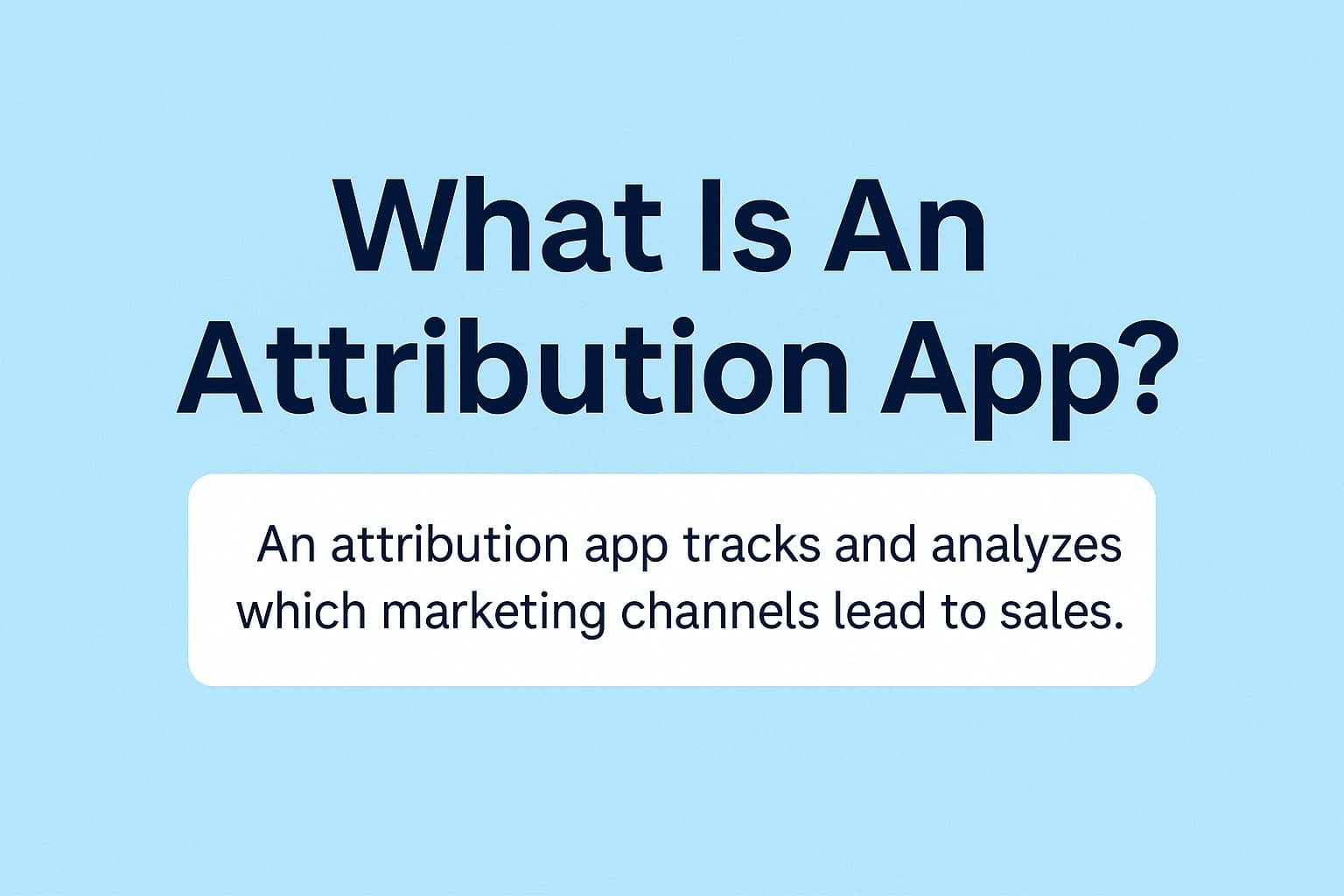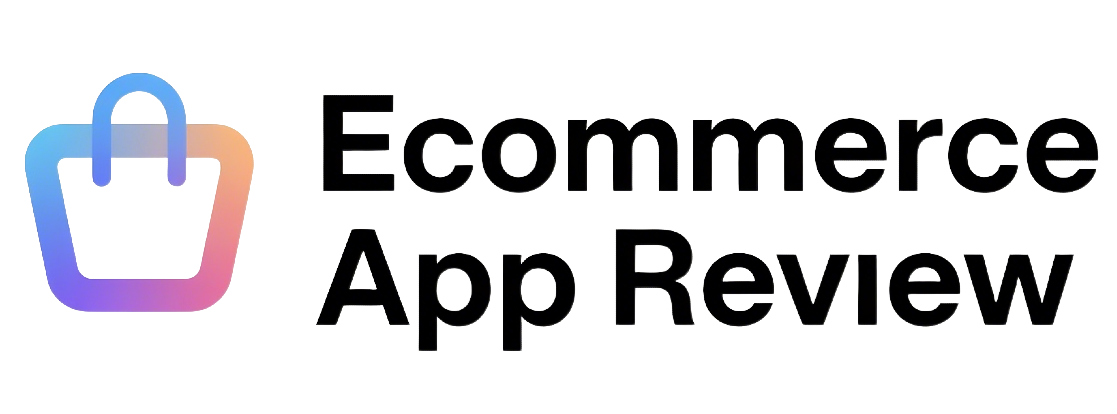Why You’re Probably Wasting Money Right Now
Attribution apps? First let me paint a familiar picture…
You’ve got Meta ads running. Google’s eating budget too. Maybe TikTok. You’re sending emails, working with influencers, even dabbling in affiliate. And the sales are… decent. You think.
But then the questions start.
- What channel actually drove that $220 order?
- Is Google stealing credit from Meta?
- Why did ROAS tank on a campaign that felt like it worked?
And the data? It’s a dumpster fire.
Shopify’s default reports tell you last-click only. No path to purchase. No channel interaction. Just a single source per order, often inaccurate. You’re optimizing your store with a blindfold on.
If you’re spending more than $1,000/month on traffic and still relying on Shopify’s native analytics, I have one word for you: stop.
Attribution isn’t a luxury. It’s a necessity. It’s the difference between scaling profitably and torching ad spend. And no—you don’t need to be a data scientist to fix this.
In this guide, I’ll walk you through 10 Shopify attribution tools that actually make sense. I’ve used these. I’ve worked with clients using them. I’ll tell you what they’re good at, where they fall short, and who should use what.
No fluff. No generic “Top 10” garbage. Just the truth.
Let’s fix your data problem.
What Are Attribution Apps?
An attribution app tells you what actually caused a customer to buy—not just what they clicked last.
Let me break it down.
Most tools (like Shopify’s default reports) use last-click attribution. That means whatever the customer clicked right before buying gets 100% of the credit. Makes sense, right?
Wrong.
Let’s say a customer sees a TikTok. Then clicks your email. Then gets hit by a Facebook retargeting ad. Then finally buys.
Who deserves credit?
All of them.
Attribution apps let you assign credit across the full journey. They track multiple touches. Some even show how long it took, what the customer did between clicks, and which campaign had the biggest influence.
There are different models:
- First-click: Gives all credit to the first touch.
- Last-click: Shopify’s default.
- Linear: Equal credit across all touches.
- Time-decay: More credit to recent actions.
- Position-based: 40/20/40 split between first, last, and middle.
Why does this matter?
Because if you scale a channel based on flawed data, you’ll waste cash. Attribution apps give you the real picture so you can double down on what’s working—and kill what’s not.
That’s it. No jargon. Just useful clarity.

What Makes Attribution Apps Good?
Before we dive in, here’s what I looked for:
✅ Clear Attribution Models
Can the tool handle multi-touch? First-click? Linear? Can I customize lookback windows?
✅ Setup Simplicity
Is it plug-and-play, or do I need to bribe a developer with pizza and tears?
✅ Dashboard Clarity
Does the UI help me understand what to do next, or just throw graphs in my face?
✅ Creative-Level Insights
Can I see which TikTok or Facebook creative actually drove the conversion?
✅ Cost vs. Value
Does the pricing make sense for small or mid-sized stores, or is it just built for whales?
If an app failed in two or more categories, it’s not on this list. Period.
1. ThoughtMetric – Best of the Attribution Apps for Clarity and Balance
Pricing: From $99/month
Setup: Easy with pixel + optional survey
Best For: Scaling stores doing $10K–$250K/month
ThoughtMetric is the attribution tool I recommend the most. Not because it’s the cheapest. Not because it’s the flashiest. Because it balances clarity, power, and accessibility like nothing else.
You drop in a pixel and add a post-purchase survey (optional but useful). Immediately, you start seeing how your paid, organic, email, and social traffic actually work together. Multi-touch is the default. Last-click and first-click are available too.
The dashboard is clean. You get campaign-level views, platform summaries, and paths to purchase that even a junior marketer can interpret. It integrates with Meta, TikTok, Google, Klaviyo, and Shopify out of the box.
What I love? It connects to ad platforms via CAPI and pipes clean data back. That means smarter optimization at the ad level, not just reporting.
What’s missing? Deep cohort analysis and creative-level performance. But for 95% of Shopify brands, ThoughtMetric is the right place to start—and possibly end.
2. ATB Attribution Reports – Best of the Attribution Apps for Tight Budgets
Pricing: From $19/month
Setup: One-click pixel install
Best For: Brands doing <$20K/month in sales
If you’re on a budget but need better than Shopify’s native data, ATB is your friend. It’s simple, lightweight, and focuses on core attribution views—first, last, linear, and time-decay.
You won’t get flashy features. There’s no creative breakdown, no real-time reporting, no AI suggestions. But the tracking is solid. If you tag your campaigns properly (UTMs, people), you’ll get surprisingly actionable data.
Setup takes less than 10 minutes. And unlike some “cheap” tools, the reporting isn’t a UX nightmare.
It’s not a forever solution. Once you hit scale, you’ll outgrow it. But for a lean brand testing Facebook and TikTok with a few grand per month, ATB will pay for itself in one week.
3. Littledata – Best of the Attribution Apps for Google Analytics Fans
Pricing: From $29/month
Setup: Medium – some GA familiarity helps
Best For: Brands already using GA4 extensively
Littledata is for folks who live inside Google Analytics and want to clean up the mess that is Shopify’s GA integration.
It fixes event mismatches, aligns sessions, and provides accurate checkout funnel tracking. You get multi-touch attribution within your GA account, tied to clean ecommerce events.
This is not an attribution “tool” in the sense of its own dashboard. It’s more of a bridge between Shopify and GA4—making sure the numbers you think are accurate actually are.
If you or your team already trust GA4 for everything else, this is a no-brainer.
If not? It might feel like overkill. The dashboard is GA’s—not Littledata’s—so if you hate GA4’s layout, this isn’t for you.
4. Triple Whale – Best of the Attribution Apps for Ecommerce Command Center
Pricing: From $129/month
Setup: Medium complexity, but guided
Best For: 7-figure brands juggling multiple tools
Triple Whale is not just an attribution tool. It’s an entire operating system for ecommerce brands.
You get pixel-based tracking, multi-touch attribution, creative-level breakdowns, profit/loss views, inventory tracking, and even SMS performance—all in one slick dashboard.
This is the tool that consolidates all your fragmented systems. Ad spend, revenue, margins, customer LTV, CAC—all visualized together.
The pixel is first-party. The data is clean. And the creative-level insights help performance marketers cut losers early and scale winners fast.
It’s not cheap. But for brands juggling Facebook, Google, TikTok, Klaviyo, and influencer programs? This thing pays for itself before lunch.
Warning: it’s dense. The dashboard is powerful, but the learning curve is real. Block off a weekend.
5. Northbeam – Best of the Attribution Apps for Advanced Scaling
Pricing: Custom pricing (often $1,000+/month)
Setup: Complex – onboarding required
Best For: Brands with dedicated analysts or agencies
Northbeam doesn’t play. It’s a powerhouse for media mix modeling, LTV prediction, path-to-purchase mapping, and cohort-based reporting.
It uses machine learning to assign value across customer touchpoints. This means smarter budget allocation. Not just “Meta vs Google,” but “which email campaign + TikTok + retargeting combo drove the highest margin LTV.”
Their support team works with you directly. You’ll need it. This isn’t a plug-and-play solution. It’s a full data infrastructure.
If you’re a $5M+/year brand and ready to get surgical with your spend, Northbeam is a scalpel. But if you’re not that size yet? It’s like buying a spaceship to go grocery shopping.
6. NestAds – Best of the Attribution Apps for Ad Creative Insights
Pricing: Free tier + $129.99/month Pro
Setup: Easy – truly no-code
Best For: Paid media teams focused on creative testing
NestAds is one of the only tools I’ve seen that shows creative-level attribution cleanly. That means you can see which specific TikTok or Reels video is generating conversions—not just which campaign.
For brands that run a high volume of ads, this is a big deal. Creative fatigue is real. NestAds helps you spot it fast and fix it faster.
It also supports multiple attribution models, has a great UI, and integrates with TikTok Ads Manager directly (big bonus).
What it doesn’t have? Deeper LTV insights or path-to-purchase reports. But if you want to scale creative performance, this tool is a beast.
7. Attribuly – Best of the Attribution Apps for Non-Technical Teams
Pricing: $79/month and up
Setup: Fast and friendly
Best For: Mid-sized brands with lean teams
Attribuly is what happens when someone decides attribution software should be easy to use.
The UI is stupidly clean. You can switch between attribution models with one click. You get real-time views of customer journeys. And yes, there’s a live lookback window editor.
It doesn’t overwhelm you with data. It shows you what matters. ROAS by channel. First vs last click. Funnel views.
It’s not as deep as Triple Whale. But it’s also not $1,000/month.
This is a great pick for $20K–$300K/month stores that want smarter insights without needing a data team.
8. Source Medium – Best of the Attribution Apps for Unified Omnichannel Brands
Pricing: Custom – typically agency-level
Setup: Guided onboarding only
Best For: Brands selling DTC + retail + wholesale
Source Medium is for the omni-channel brands. The ones juggling Shopify, Amazon, B2B wholesale, popup events, and more.
It pipes all that data into one unified layer—then lets you report on it coherently. Finally.
You can see true LTV across sources. How BFCM email impacted in-store sales. Which campaigns moved the needle across all channels.
It’s heavy. It’s expensive. But for brands doing $10M+ with mixed revenue streams, it unlocks clarity you didn’t think was possible.
9. Peel – Best of the Attribution Apps for Retention Attribution
Pricing: From $199/month
Setup: Moderate
Best For: Subscription and high-LTV brands
Peel flips attribution on its head. It’s less about “where did the first click come from” and more about “what drove the second, third, and tenth order?”
That’s huge for retention-focused brands—think supplements, coffee, skincare, SaaS.
You get cohort-level insights, subscription drop-off tracking, campaign LTV reporting, and automated alerts when behavior changes.
It integrates with Recharge, Klaviyo, and Shopify seamlessly. The UI is simple, and setup is smooth.
If retention matters more to you than cold ad ROAS, Peel is worth every dollar.
10. Daasity – Best of the Attribution Apps for Data Ownership & Warehousing
Pricing: Enterprise
Setup: Very technical
Best For: Brands with in-house dev or data teams
Daasity isn’t a dashboard. It’s infrastructure.
It gives you ETL pipelines, data normalization, warehousing, and full control of every metric across ecommerce, marketing, and ops.
Attribution is just one slice. You’ll own the data schema, the query logic, the modeling assumptions. It’s your BI stack—but managed.
I only recommend this to brands doing $20M+/year who want total control. If you’re still worried about UTMs and last-click? Skip it.
Which Attribution App Should You Pick?
Here’s the short version:
- Just starting? → ATB or NestAds
- Scaling but lean? → ThoughtMetric or Attribuly
- Multiple ad channels + need clarity? → Triple Whale
- Data nerd with budget? → Northbeam or Daasity
- Retail + online? → Source Medium
- Retention focused? → Peel
- Google Analytics junkie? → Littledata
Pick one. Test it for 14–30 days. Watch what it tells you. Change how you spend.
Final Word
Attribution isn’t a dashboard. It’s a decision tool. And if you don’t trust your data, you’re not scaling—you’re guessing.
You wouldn’t run inventory blind. Or shipping. Or customer service.
So stop running marketing that way.
Pick a tool. Plug it in. Learn fast. Spend smarter.
And if one of these makes your ad spend more accountable? That monthly fee becomes the cheapest investment you’ll make all year.
Go fix your tracking. You’re better than guesses.
Want to Get Even Smarter?
If you made it this far, you’re clearly serious about not wasting money.
Attribution is just the start.
There’s more to dial in—email flows, LTV tracking, post-purchase experiences, bundling, upsells. We cover all of it.
So before you bounce? Go read a few more of our no-BS breakdowns:
- The Best Shopify Email Marketing App for 2025
- Best Upsell Apps That Actually Increase AOV
- The Ultimate Guide: 35+ Must Have Shopify Apps
No fluff. No recycled crap. Just real tools and strategies that work.


1 thought on “The 10 Best Attribution Apps For Shopify Stores Big & Small”